Forced labour under German rule during World War II
The use of slave and forced labour in Nazi Germany and throughout German-occupied Europe during World War II took place on an unprecedented scale.[2] It was a vital part of the German economic exploitation of conquered territories. It also contributed to the mass extermination of populations in occupied Europe. The Germans abducted approximately 12 million people from almost twenty European countries; about two thirds came from Central Europe and Eastern Europe.[1] Many workers died as a result of their living conditions – extreme mistreatment, severe malnutrition, and worse tortures were the main causes of death. Many more became civilian casualties from enemy (Allied) bombing and shelling of their workplaces throughout the war.[3] At its peak the forced labourers comprised 20% of the German work force. Counting deaths and turnover, about 15 million men and women were forced labourers at one point during the war.[4]
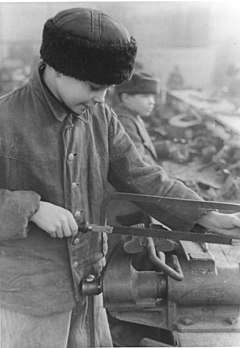 Original Nazi propaganda caption: "A 14-year-old youth from Ukraine repairs damaged motor vehicles in a Berlin workshop of the German Wehrmacht. January 1945."
|
The defeat of Nazi Germany in 1945 freed approximately 11 million foreigners (categorized as "displaced persons"), most of whom were forced labourers and POWs. In wartime, the German forces had brought into the Reich 6.5 million civilians in addition to Soviet POWs for unfree labour in factories.[1] Returning them home was a high priority for the Allies. However, in the case of citizens of the USSR, returning often meant suspicion of collaboration or the Gulag. The United Nations Relief and Rehabilitation Administration (UNRRA), Red Cross, and military operations provided food, clothing, shelter, and assistance in returning home. In all, 5.2 million foreign workers and POWs were repatriated to the Soviet Union, 1.6 million to Poland, 1.5 million to France, and 900,000 to Italy, along with 300,000 to 400,000 each to Yugoslavia, Czechoslovakia, the Netherlands, Hungary, and Belgium.[5]
Forced workers

Hitler's policy of Lebensraum (room for living) strongly emphasized the conquest of new lands in the East, known as Generalplan Ost, and the exploitation of these lands to provide cheap goods and labour for Germany. Even before the war, Nazi Germany maintained a supply of slave labour. This practice started from the early days of labour camps of "unreliable elements" (German: unzuverlässige Elemente), such as the homeless, homosexuals, criminals, political dissidents, communists, Jews, and anyone whom the regime wanted out of the way. During World War II the Nazis operated several categories of Arbeitslager (labour camps) for different categories of inmates. Prisoners in Nazi labour camps were worked to death on short rations and in bad conditions, or killed if they became unable to work. Many died as a direct result of forced labour under the Nazis.[1]
After the invasion of Poland, Polish Jews over the age of 12 and Poles over the age of 12 living in the General Government were subject to forced labor.[6] Historian Jan Gross estimates that “no more than 15 percent” of Polish workers volunteered to go to work in Germany.[7] In 1942, all non-Germans living in the General Government were subject to forced labor.[8]
The largest number of labour camps held civilians forcibly abducted in the occupied countries (see Łapanka) to provide labour in the German war industry, repair bombed railroads and bridges, or work on farms. Manual labour was a resource in high demand, as much of the work that today would be done with machines was still a manual affair in the 1930s and 1940s – shoveling, material handling, machining, and many others. As the war progressed, the use of slave labour increased massively. Prisoners of war and civilian "undesirables" were brought in from occupied territories. Millions of Jews, Slavs and other conquered peoples were used as slave labourers by German corporations, such as Thyssen, Krupp, IG Farben, Bosch, Daimler-Benz, Demag, Henschel, Junkers, Messerschmitt, Siemens, and even Volkswagen,[9] not to mention the German subsidiaries of foreign firms, such as Fordwerke (a subsidiary of the Ford Motor Company) and Adam Opel AG (a subsidiary of General Motors) among others.[10] Once the war had begun, the foreign subsidiaries were seized and nationalized by the Nazi-controlled German state, and work conditions there deteriorated as they did throughout German industry. About 12 million forced labourers, most of whom were Eastern Europeans, were employed in the German war economy inside Nazi Germany throughout the war.[11] The German need for slave labour grew to the point that even children were kidnapped to work in an operation called the Heu-Aktion. More than 2,000 German companies profited from slave labour during the Nazi era, including Deutsche Bank and Siemens.[12]
Classifications
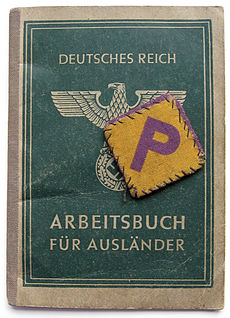
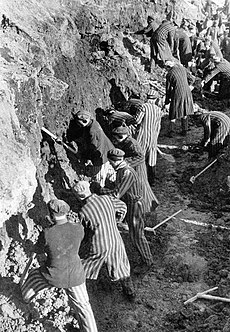
A class system was created amongst Fremdarbeiter ("foreign workers") brought to Germany to work for the Reich. The system was based on layers of increasingly less privileged workers, starting with well paid workers from Germany's allies or neutral countries to forced labourers from conquered Untermenschen ("sub-humans") populations.
- Gastarbeitnehmer ("guest workers") – Workers from Germanic and Scandinavian countries, France, Italy,[13] other German allies (Romania, Bulgaria, Hungary), and friendly neutrals (e.g. Spain and Switzerland). This was a very small group; only about 1% of foreign workers in Germany came from countries that were neutral or allied to Germany.[1]
- Zwangsarbeiter (forced workers) – Forced labourers from countries not allied with Germany. This class of workers was broken down into the following designations:
- Militärinternierte ("military internees") – Prisoners of war. Geneva Conventions allowed captor nations to force non-officer prisoners of war to work within certain restrictions. For example, almost all Polish non-officer prisoners of war (c. 300,000) were forced to work in Nazi Germany. In 1944, there were almost 2 million prisoners of war employed as forced labourers in Germany.[13] Compared to other foreign workers, the prisoners of war were relatively well-off, especially if they came from western countries that were still at war like the United States or Britain, as the minimum standards of their treatment were mandated by the Geneva Conventions. Their working conditions and well-being were subject to supervision by the International Red Cross and, in cases of mistreatment, retaliation against German prisoners held in the US, Britain and Canada (who were performing similar forced labor) was almost certain. However, the treatment of these workers varied greatly depending on their country of origin, the period, and the specific workplace. In particular, Soviet prisoners of war were treated with utter brutality as Nazis did not consider them subject to protection under the Geneva Conventions, which had not been ratified nor implemented by the Soviet Union.
- Zivilarbeiter ("civilian workers") – ethnic Poles from the General Government.[13] They were regulated by strict Polish decrees: they received much lower wages and could not use conveniences such as public transport, or visit many public spaces and businesses (for example they could not visit German church services, swimming pools, or restaurants); they had to work longer hours and were assigned smaller food rations; they were subject to a curfew. Poles were routinely denied holidays and had to work seven days a week; they could not enter marriage between themselves without a permit; they could not possess money or objects of value: bicycles, cameras, or even lighters. They were required to wear a sign: the "Polish P", on their clothing. In 1939 there were about 300,000 Polish Zivilarbeiter in Germany.[1][13] By 1944, their number skyrocketted to about 1.7 million,[13] or 2.8 million by different accounts (approximately 10% of occupied Poland's prisoner workforce).[14] In 1944, there were about 7.6 million foreign so-called civilian workers employed in Germany in total, including POWs from Generalgouvernement and the expanded USSR,[13] with and a similar number of workers in this category from other countries.[1]
- Ostarbeiter ("Eastern workers") – Soviet and Polish civil workers rounded up primarily in Distrikt Galizien and in Reichskommissariat Ukraine. They were marked with a sign OST ("East"), had to live in camps that were fenced with barbed wire and under guard, and were particularly exposed to the arbitrariness of the Gestapo and the industrial plant guards. Estimates put the number of OST workers between 3 million and 5.5 million.[15][16]
In general, foreign labourers from Western Europe had similar gross earnings and were subject to similar taxation as German workers. In contrast, the central and eastern European forced labourers received at most about one-half the gross earnings paid to German workers and much fewer social benefits.[1] Forced labourers who were prisoners of labour or concentration camps received little if any wage and benefits.[1] The deficiency in net earnings of central and eastern European forced labourers (versus forced labourers from western countries) is illustrated by the wage savings forced labourers were able to transfer to their families at home or abroad (see table).
The Nazis issued a ban on sexual relations between Germans and foreign workers.[17] Repeated efforts were made to propagate Volkstum ("racial consciousness"), to prevent such relations.[18] Pamphlets, for instance, instructed all German women to avoid physical contact with all foreign workers brought to Germany as a danger to their blood.[19] Women who disobeyed were imprisoned.[20] Even fraternization with the workers was regarded as dangerous, and targeted with pamphlet campaigns in 1940–1942.[21] The soldiers in the Wehrmacht and SS officers were exempt from any such restrictions. It is estimated that at least 34,140 Eastern European women apprehended in Łapankas (military kidnapping raids), were forced to serve them as "sex slaves" in German military brothels and camp brothels during the Third Reich.[22][23] In Warsaw alone, there were five such establishments set up under military guard in September 1942, with over 20 rooms each. Alcohol was not allowed in there, unlike on the western front, and the victims underwent genital checkups once a week.[24]
Numbers
In the late summer of 1944, German records listed 7.6 million foreign civilian workers and prisoners of war in the German territory, most of whom had been brought there by coercion.[13] By 1944, slave labour made up one quarter of Germany's entire work force, and the majority of German factories had a contingent of prisoners.[13][25] The Nazis also had plans for the deportation and enslavement of 50% of Britain's adult male population in the event of a successful invasion.[26]
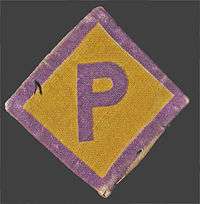

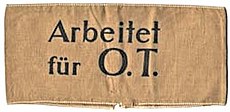
Foreign civilian forced labourers in Nazi Germany by country of origin, January 1944 with transfer payment to the Reich per labourer Source: Beyer & Schneider [1] Countries Number % of total RM Total 6,450,000 100.0% Occupied Central and Eastern Europe 4,208,000 65.2% median 15 RM Czechoslovakia 348,000 5.4% Poland 1,400,000 21.7% 33.5 RM Yugoslavia 270,000 4.2% USSR including annexed lands 2,165,000 33.6% 4 RM Hungary 25,000 0.4% Greece 20,000 0.3% Occupied Western Europe 2,155,000 33.4 median 700 RM France (except Alsace-Lorraine) 1,100,000 17.1% 487 RM Norway 2,000 – Denmark 23,000 0.4% Netherlands 350,000 5.4% Belgium 500,000 7.8% 913 RM Italy[lower-alpha 1] 180,000 2.8% 1,471 RM German allies and neutral countries 87,000 1.3% Bulgaria 35,000 0.5% Romania 6,000 0.1% Spain 8,000 0.1% Switzerland 18,000 0.3%
Organisation Todt
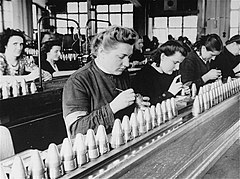
The Organisation Todt was a Nazi era civil and military engineering group in Nazi Germany, eponymously named for its founder Fritz Todt, an engineer and senior Nazi figure. The organization was responsible for a huge range of engineering projects both in pre-World War II Germany, and in all of occupied Europe from France to Russia. Todt became notorious for using forced labour. Most of the so-called "volunteer" Soviet POW workers were assigned to the Organisation Todt.[27] The history of the organization falls into three main phases.[28]
- A pre-war period between 1933 and 1938, during which the predecessor of Organisation Todt, the office of General Inspector of German Roadways (Generalinspektor für das deutsche Straßenwesen), was primarily responsible for the construction of the German Autobahn network. The organisation was able to draw on "conscripted" (i.e. compulsory) labour from within Germany through the Reich Labour Service (Reichsarbeitsdienst, RAD).
- The period from 1938 until 1942 after Operation Barbarossa, when the Organisation Todt proper was founded and utilized on the Eastern front. The huge increase in the demand for labour created by the various military and paramilitary projects was met by a series of expansions of the laws on compulsory service, which ultimately obligated all Germans to arbitrarily determined (i.e. effectively unlimited) compulsory labour for the state: Zwangsarbeit.[29] From 1938–40, Over 1.75 million Germans were conscripted into labour service. From 1940–42, Organization Todt began its reliance on Gastarbeitnehmer (guest workers), Militärinternierte (military internees), Zivilarbeiter (civilian workers), Ostarbeiter (Eastern workers) and Hilfswillige ("volunteer") POW workers.
- The period from 1942 until the end of the war, with approximately 1.4 million labourers in the service of the Organisation Todt. Overall, 1% were Germans rejected from military service and 1.5% were concentration camp prisoners; the rest were prisoners of war and compulsory labourers from occupied countries. All were effectively treated as slaves and existed in the complete and arbitrary service of a ruthless totalitarian state. Many did not survive the work or the war.[28]
Extermination through labour
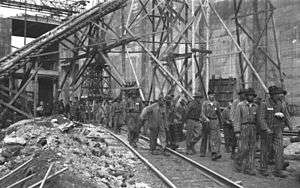
Millions of Jews were forced labourers in ghettos, before they were shipped off to extermination camps. The Nazis also operated concentration camps, some of which provided free forced labour for industrial and other jobs while others existed purely for the extermination of their inmates. To mislead the victims, at the entrances to a number of camps the lie "work brings freedom" ("arbeit macht frei") was placed, to encourage the false impression that cooperation would earn release. A notable example of labour-concentration camp is the Mittelbau-Dora labour camp complex that serviced the production of the V-2 rocket. Extermination through labour was a Nazi German World War II principle that regulated the aims and purposes of most of their labour and concentration camps.[30][31] The rule demanded that the inmates of German World War II camps be forced to work for the German war industry with only basic tools and minimal food rations until totally exhausted.[30][32]
Controversy over compensation
To facilitate the economy after the war, certain categories of the victims of Nazism were excluded from compensation from the German Government; those were the groups with the least amount of political pressure they could have brought to bear, and many forced labourers from the Eastern Europe fall into that category.[33] There has been little initiative on the part of the German government or business to compensate the forced labourers from the war period.[1]
As stated in the London Debt Agreement of 1953:
Consideration of claims arising out of the Second World War by countries which were at war with or were occupied by Germany during that war, and by nationals of such countries, against the Reich and agencies of the Reich, including costs of German occupation, credits acquired during occupation on clearing accounts and claims against the Reichskreditkassen shall be deferred until the final settlement of the problem of reparations.
—Heinrich Himmler, Reichsführer-SS
(4 October 1943)[34]
To this date, there are arguments that such settlement has never been fully carried out and that Germany post-war development has been greatly aided, while the development of victim countries stalled.[1]
A prominent example of a group which received almost no compensation for their time as forced labourer in Nazi Germany are the Polish forced labourers. According to the Potsdam Agreements of 1945, the Poles were to receive reparations not from Germany itself, but from the Soviet Union share of those reparations; due to the Soviet pressure on the Polish communist government, the Poles agreed to a system of repayment that de facto meant that few Polish victims received any sort of adequate compensation (comparable to the victims in Western Europe or Soviet Union itself). Most of the Polish share of reparations was "given" to Poland by Soviet Union under the Comecon framework, which was not only highly inefficient, but benefited Soviet Union much more than Poland. Under further Soviet pressure (related to the London Agreement on German External Debts), in 1953 the People's Republic of Poland renounced its right to further claims of reparations from the successor states of Nazi Germany. Only after the fall of communism in Poland in 1989/1990 did the Polish government try to renegotiate the issue of reparations, but found little support in this from the German side and none from the Soviet (later, Russian) side.[33]
The total number of forced labourers under Nazi rule who were still alive as of August 1999 was 2.3 million.[1] The German Forced Labour Compensation Programme was established in 2000; a forced labour fund paid out more than 4.37 billion euros to close to 1.7 million of then-living victims around the world (one-off payments of between 2,500 and 7,500 euros).[35] Germany Chancellor Angela Merkel stated in 2007 that "Many former forced labourers have finally received the promised humanitarian aid"; she also conceded that before the fund was established nothing had gone directly to the forced labourers.[35] German president Horst Koehler stated
- It was an initiative that was urgently needed along the journey to peace and reconciliation... At least, with these symbolic payments, the suffering of the victims has been publicly acknowledged after decades of being forgotten.[35]
See also
- Private sector participation in Nazi crimes
- Arbeitseinsatz, (forced labour deployment)
- Totaleinsatz, a colloquial term used for a subset of the Arbeitseinsatz program concerning 400,000 Czechs
- Polnischer Baudienst im Generalgouvernement, (Polish Construction Service in the General Government)
- Deutsche Wirtschaftsbetriebe (DWB), (German Economic Enterprises)
- Fritz Sauckel
- Italian military internees
- Service du travail obligatoire (STO), (Compulsory Work Service in Vichy France)
- Forced labor of Germans after World War II
References
Informational notes
- By September 1943 Italy had switched sides, and in Northern Italy the Italian Social Republic puppet state was born; therefore it is included in Occupied Western Europe. Bulgaria, Hungary and Romania would not switch sides until summer 1944 and are included in German allies section.
Citations
- John C. Beyer; Stephen A. Schneider. Forced Labour under Third Reich. Nathan Associates. Part1 Archived 2015-08-24 at the Wayback Machine and Part 2 Archived 2017-04-03 at the Wayback Machine.
- Ulrich Herbert, Hitler's Foreign Workers: Enforced Foreign Labour in Germany under the Third Reich (1997)
- Czesław Łuczak (1979). Polityka ludnościowa i ekonomiczna hitlerowskich Niemiec w okupowanej Polsce [Civilian and economic policy of Nazi Germany in occupied Poland]. Poznań: Wydawnictwo Poznańskie. pp. 136–. ISBN 832100010X. Retrieved 11 October 2013.
Also in: Eksploatacja ekonomiczna ziem polskich (Economic exploitation of Poland's territory) by Dr. Andrzej Chmielarz, Polish Resistance in WW2, Eseje-Artykuły.
- Panikos Panayi, "Exploitation, Criminality, Resistance. The Everyday Life of Foreign Workers and Prisoners of War in the German Town of Osnabrück, 1939–49," Journal of Contemporary History Vol. 40, No. 3 (Jul., 2005), pp. 483–502 in JSTOR
- William I. Hitchcock, The Bitter Road to Freedom: The Human Cost of Allied Victory in World War II Europe (2008), pp 250–56
- Diemut Majer (2003). "Non-Germans" Under the Third Reich: The Nazi Judicial and Administrative System in Germany and Occupied Eastern Europe with Special Regard to Occupied Poland, 1939–1945. JHU Press. ISBN 978-0-8018-6493-3.
- Gellately, Robert (2002). Backing Hitler: Consent And Coercion In Nazi Germany. Oxford: Oxford University Press. p. 127. ISBN 0192802917.
- Majer, 2003, p. 303
- Marc Buggeln (2014). Slave Labor in Nazi Concentration Camps. Index of Companies. OUP Oxford. p. 335. ISBN 978-0191017643 – via Google Books, preview.
- Sohn-Rethel, Alfred Economy and Class Structure of German Fascism, CSE Books, 1978 ISBN 0-906336-01-5
- Marek, Michael (2005-10-27). "Final Compensation Pending for Former Nazi Forced Labourers". Deutsche Welle. Retrieved 2008-05-20. See also: "Forced Labour at Ford Werke AG during the Second World War". The Summer of Truth Website. Archived from the original on 2007-10-14. Retrieved 2008-05-20.
- "Comprehensive List Of German Companies That Used Slave Or Forced Labour During World War II Released". American Jewish Committee. 7 December 1999. Archived from the original on 2008-04-08. Retrieved 2008-05-20. See also: Roger Cohen (February 17, 1999). "German Companies Adopt Fund For Slave Labourers Under Nazis". The New York Times. Retrieved 2008-05-20. "German Firms That Used Slave or Forced Labour During the Nazi Era". American Jewish Committee. January 27, 2000. Retrieved 2008-07-17.
- Ulrich Herbert (16 March 1999). "The Army of Millions of the Modern Slave State: Deported, used, forgotten: Who were the forced workers of the Third Reich, and what fate awaited them?". Frankfurter Allgemeine Zeitung. Archived from the original on June 4, 2011. Retrieved January 6, 2013.
- A. Paczkowski, Historia Powszechna/Historia Polski, Wydawnictwo Naukowe PWN, Warszawa 2008, tom 16, p. 28
- Alexander von Plato; Almut Leh; Christoph Thonfeld (2010). Hitler's Slaves: Life Stories of Forced Labourers in Nazi-Occupied Europe. Berghahn Books. pp. 251–62. ISBN 978-1845459901.
- Павел Полуян. Остарбайтеры (in Russian). Retrieved 2008-05-20.
- Special treatment is done by train (Sonderbehandlung)
- Robert Edwin Hertzstein, The War That Hitler Won p139 ISBN 0-399-11845-4
- Leila J. Rupp, Mobilizing Women for War, p 124-5, ISBN 0-691-04649-2, OCLC 3379930
- Robert Edwin Hertzstein, The War That Hitler Won p212 ISBN 0-399-11845-4
- Robert Edwin Hertzstein, The War That Hitler Won p211-2 ISBN 0-399-11845-4
- Nanda Herbermann; Hester Baer; Elizabeth Roberts Baer (2000). The Blessed Abyss (Google Books). Detroit: Wayne State University Press. pp. 33‑, 34. ISBN 0-8143-2920-9. Retrieved January 12, 2011.
- Lenten, Ronit (2000). Israel and the Daughters of the Shoah: Reoccupying the Territories of Silence. Berghahn Books. pp. 33–34. ISBN 1-57181-775-1.
- Joanna Ostrowska, Marcin Zaremba, "Do burdelu, marsz!" (March in, to the brothel!), Polityka, No 22 (2707), May 30, 2009; pp. 70–72 (in Polish)
- Allen, Michael Thad (2002). The Business of Genocide. The University of North Carolina Press. pp. 1. See also: Herbert, Ulrich. "Forced Labourers in the "Third Reich"". International Labour and Working-Class History. Archived from the original on 2008-04-15. Retrieved 2008-05-20.
- Shirer, William. The Rise and Fall of the Third Reich, Arrow books 1991.
- Christian Streit: Keine Kameraden: Die Wehrmacht und die Sowjetischen Kriegsgefangenen, 1941–1945, Bonn: Dietz (3. Aufl., 1. Aufl. 1978), ISBN 3-8012-5016-4 – "Between 22 June 1941 and the end of the war, roughly 5.7 million members of the Red Army fell into German hands. In January 1945, 930,000 were still in German camps. A million at most had been released, most of whom were so-called "volunteer" (Hilfswillige) for (often compulsory) auxiliary service in the Wehrmacht. Another 500,000, as estimated by the Army High Command, had either fled or been liberated. The remaining 3,300,000 (57.5 percent of the total) had perished."
- HBC (25 September 2009). "Organization Todt". World War II: German Military Organizations. HBC Historical Clothing. Retrieved 16 October 2014.
Sources: 1. Gruner, Wolf. Jewish Forced Labor Under the Nazis. Economic Needs and Racial Aims, 1938–1944 (New York: Cambridge University Press, 2006), published in association with the United States Holocaust Memorial Museum. 2. U.S. War Department, "The Todt Organization and Affiliated Services" Tactical and Technical Trends No. 30 (July 29, 1943).
- Verordnung zur Sicherstellung des Kräftebedarfs für Aufgaben von besonderer staatspolitischer Bedeutung of October 15, 1938 (Notdienstverordnung), RGBl. 1938 I, Nr. 170, S. 1441–1443; Verordnung zur Sicherstellung des Kräftebedarfs für Aufgaben von besonderer staatspolitischer Bedeutung of February 13, 1939, RGBl. 1939 I, Nr. 25, S. 206f.; Gesetz über Sachleistungen für Reichsaufgaben (Reichsleistungsgesetz) of September 1, 1939, RGBl. 1939 I, Nr. 166, S. 1645–1654. [ RGBl = Reichsgesetzblatt, the official organ for he publication of laws.] For further background, see Die Ausweitung von Dienstpflichten im Nationalsozialismus Archived 2005-11-27 at the Wayback Machine(in German), a working paper of the Forschungsprojekt Gemeinschaften, Humboldt University, Berlin, 1996–1999.
- Stanisław Dobosiewicz (1977). Mauthausen/Gusen; obóz zagłady (Mauthausen/Gusen; the Camp of Doom) (in Polish). Warsaw: Ministry of National Defense Press. p. 449. ISBN 83-11-06368-0.
- Wolfgang Sofsky (1999). The Order of Terror: The Concentration Camp. Princeton: Princeton University Press. p. 352. ISBN 0-691-00685-7.
- Władysław Gębik (1972). Z diabłami na ty (Calling the Devils by their Names) (in Polish). Gdańsk: Wydawnictwo Morskie. p. 332. See also: Günter Bischof; Anton Pelinka (1996). Austrian Historical Memory and National Identity. Transaction Publishers. pp. 185–190. ISBN 1-56000-902-0. and Cornelia Schmitz-Berning (1998). "Vernichtung durch Arbeit". Vokabular des Nationalsozialismus (Vocabulary of the National Socialism) (in German). Walter de Gruyter. p. 634. ISBN 3-11-013379-2.
- Jeanne Dingell. "The Question of the Polish Forced Labourer during and in the Aftermath of World War II: The Example of the Warthegau Forced Labourers". remember.org. Retrieved 2008-06-02.
- Shirer 1990, p.937
- Erik Kirschbaum (12 June 2007). "Germany ends war chapter with "slave fund" closure". Reuters. Archived from the original on 2008-07-24. Retrieved 2008-07-13.
Further reading
- Herbert, Ulrich (1997). Hitler's Foreign Workers: Enforced Foreign Labour in Germany Under the Third Reich. Cambridge University Press. ISBN 0-521-47000-5.
- Homze, Edward L. Foreign Labor in Nazi Germany (Princeton UP 1967)
- Edward L. Homze (Dec 1980). "Review of Benjamin B. Ferencz, Less Than Slaves: Jewish Forced Labour and the Quest for Compensation". The American Historical Review. 85 (5): 1225. doi:10.2307/1853330. JSTOR 1853330.
- Kogon, Eugen (2006). The Theory and Practice of Hell: The German Concentration Camps and the System Behind Them. Farrar, Straus and Giroux. ISBN 0-374-52992-2.
- Mazower, Mark. Hitler's Empire: How the Nazis Ruled Europe (2009) ch 10
- Mędykowski, Witold Wojciech Macht Arbeit Frei?: German Economic Policy and Forced Labor of Jews in the General Government, 1939-1943 (Academic Studies Press 2018)
- Ruhs, Florian. "Foreign Workers in the Second World War. The Ordeal of Slovenians in Germany", aventinus nova # 31 (2011).
- Tooze, Adam (2007). The Wages of Destruction. Viking Press. pp. 476–85, 538–49. ISBN 978-0-670-03826-8.
External links
- Compensation for Forced Labour in World War II: The German Compensation Law of 2 August 2000
- German compensation law
- Report on victim compensation, International Organization for Migration
- Forced Labour document from Yad Vashem
- "Forced and Slave Labour in Nazi-Dominated Europe, 1933 to 1945", United States Holocaust Memorial Museum Symposium (2002)
- International Red Cross
- Nazi Forced Labour Documentation Centre in Berlin-Schoeneweide
- Forced Labour at Salamander AG
- Claims against Germany
- International Tracing Service – Glossary